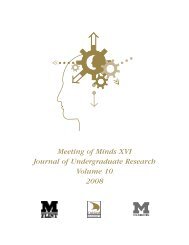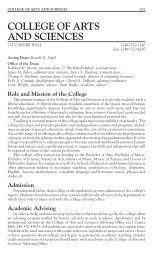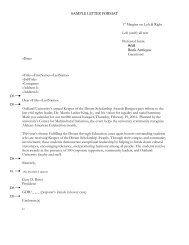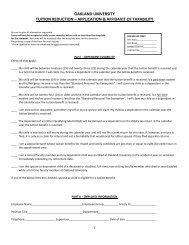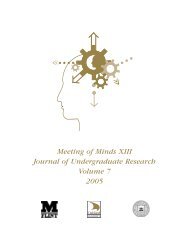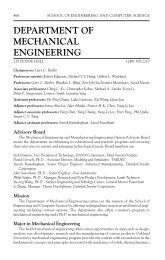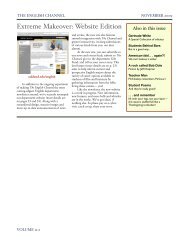MOM 2006 journal for pdf.pmd - University of Michigan-Flint
MOM 2006 journal for pdf.pmd - University of Michigan-Flint
MOM 2006 journal for pdf.pmd - University of Michigan-Flint
You also want an ePaper? Increase the reach of your titles
YUMPU automatically turns print PDFs into web optimized ePapers that Google loves.
As mentioned earlier, almost everyone surveyed uses the Internet to communicate via email,<br />
which here is listed as the second most important item on the list. In third place is socializing via<br />
web sites such as Facebook and MySpace. This middle ranking is consistent with that <strong>of</strong> the<br />
55.3%, as shown in Table 1, who indicated that this type <strong>of</strong> activity was moderately important to<br />
them.<br />
The item ranked number four on the scale corresponds to the Internet’s ability to af<strong>for</strong>d users a<br />
certain level <strong>of</strong> anonymity. When asked if they preferred to communicate via the Internet, as<br />
opposed to face-to-face contact, only a few men said yes. However, several others did state that<br />
they liked the anonymity that the Internet provides; one man <strong>of</strong>fered the reason that he found this<br />
type <strong>of</strong> interaction “less intimidating.”<br />
When responding to the same question, the majority <strong>of</strong> the women surveyed said that they did<br />
not prefer the Internet, with several commenting that they find it “impersonal.” In addition,<br />
several women did say that it depended on who they were talking to, but when it came to what<br />
both genders identified as “important issues,” they both preferred face-to-face communication.<br />
This, <strong>of</strong> course, is corroborated by the fact that romantic relationships is the last thing on the<br />
scale shown in Table 4.<br />
In addition to the items covered by Table 4, the other advantages <strong>of</strong> the Internet that people<br />
mentioned included the ability to multi-task while online, the ease and af<strong>for</strong>dability <strong>of</strong><br />
communicating over distances and, in one, the ability to think be<strong>for</strong>e responding.<br />
Conclusion<br />
Sample findings suggest that females find the Internet to be more beneficial and socially<br />
linking than men, because it allows them to connect to friends, family, romantic partners and<br />
others in online communities. Additionally, the females sampled recognize the Internet to<br />
possess addictive properties that may draw people away from face-to-face communication.<br />
In terms <strong>of</strong> Internet addiction or dependency, the actual data collect showed that an equal<br />
number <strong>of</strong> males and females spend between three to five hours, or more, on the Internet per day.<br />
However, when interviewed, more <strong>of</strong> the men sampled indicated that they spend excessive<br />
amounts <strong>of</strong> time on the Internet, and equally interesting is the fact that only men mentioned that<br />
being anonymous was something they appreciated about the Internet.<br />
While I could speculate as to why these men answered this way, the instrument was not<br />
specific enough to provide any reliable data concerning the reason behind their desire <strong>for</strong><br />
anonymity. Thus, one <strong>of</strong> the most important things that I learned while analyzing the data I did<br />
collect, was that a survey, or instrument, needs to be specific, or focused, and the terms it<br />
contains need to be as clear as possible. For example, in my Semantic Differential Scale the<br />
terms “linking” and “connecting” are perhaps too similar, and may have confused some <strong>of</strong> those<br />
who responded.<br />
Another thing that I realized while processing the data was that the instrument was too focused<br />
on Internet usage and lacked attention to participants’ face-to-face interactions. Most <strong>of</strong> the<br />
questions that were asked pertained to the amount <strong>of</strong> time that respondents spent online, but<br />
similar questions should have been developed to determine if this online activity had a negative<br />
impact on face-to-face communication.<br />
Meeting <strong>of</strong> Minds <strong>2006</strong> 62



